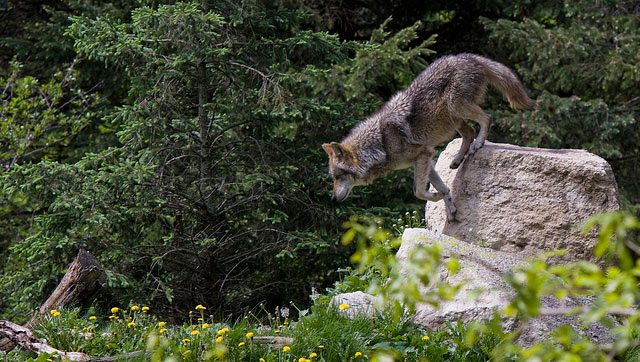Why Did the Wolf Cross the Road?
By JoshMogerman in News on Jan 28, 2012 9:00PM
You don’t exactly hear the call of the wild in Chicago… Oh sure, we have a healthy coyote population that has the run of town under the cover of darkness. Yeah, we get the occasional mountain lion visit. And we’ve got plenty of deer in the burbs. But, outside of the Forest Preserves, we’ve pretty much concreted over most everything in the region that could support big critters.
But they are not far away. And that is why a big ribbon of nearby concrete takes an interesting role in a big wildlife regulatory decision.
Gray wolves officially came off the federal Endangered Species List in the Great Lakes region yesterday. The 4,000+ wolves in Minnesota, Wisconsin and Michigan move from the protective control of the U.S. Fish and Wildlife Service to management in those states, which could eventually allow hunting of the iconic animals. But canny canids do not stay solely in the confines of those state borders, so a map was drawn to identify where the population stops (and federal protection begins). At its southern border is I-80. North of the road, wolves are managed by the State of Illinois where they will enjoy some protections under the state’s Endangered Species Act. And south of the road they will have the full protection of the federal Endangered Species Act.
What is the difference? In Illinois, probably not much. There just aren’t many wolves here, though one was hit by a McHenry County car in 2005 and another was likely photographed near Oregon, IL in 2010. If conflicts should occur in the Land of Lincoln, it would be dealt with by differing authorities depending on which side of the road the wolf happens to be standing, but the population will not likely ever be big enough to raise questions about hunts and management techniques.
Still, the return of wolves in America stands as one of the greatest conservation stories ever told. And we like the idea of a footnote to it so close to the city.
